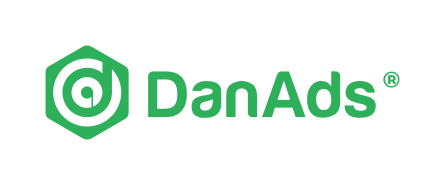Getting out of a far from ordinary 2020, we now shift the gaze to 2021 and what’s ahead. We took the opportunity of interviewing our co-founder and CPO Peo Persson on what he believes lies in store for the year to come within the advertising industry.
Q1: What did we get wrong in 2020?
A year of survival rather than a year of growth
“What we got wrong in 2020 was expecting things to continue as normal. That the media industry would continue to grow, and, in turn, companies would have advertising budgets to optimise this growth. Instead, PWC’s Entertainment and Media Outlook 2020-2024 report anticipates that online advertising in the UK will be down by 5% this year while print advertising and out-of-home advertising will be down by 24% and 30%, respectively. These numbers paint a bleak but accurate picture of 2020: a year of survival rather than a year to evolve and increase the efficiency of our software for our customers.”
Q2: How will the advertising industry change in the coming year?
Tighter budgets will mean more targeted ads
“It’s unlikely the advertising industry will recover or start next year as quickly as many anticipate. The financial impact of COVID will long be felt by publishers and advertisers alike. What this will mean for the year ahead is investment in advertising that is much more conservative, and ad campaigns that are more strategic, targeted, and cost-efficient as reflection of this. To maximise the limited resources available to them, companies will look even more to digital and online spaces to appeal to more specific audiences. The decline of traditional media will accelerate this shift as its advertising impact declines and premiums increase.”
The democratisation of digital media industry will continue
“An industry where all the small and medium-sized businesses are forced to advertise exclusively with the two biggest tech giants (Facebook and Google) is not democracy. The big publishers have started to realise there is a great window of opportunity to open up this segment and build a relationship with these advertisers that will generate revenues now and in the future. For advertisers, the major advantage to this shift is the “gold” of first party data that can only be found in the publishing space.”
Q3: How do you foresee the role of technology changing the way publishers and advertisers do business?
Self-service advertising will pass the point of no-return
“The growing influence of self-service across industries and wider society has been catalysed by the COVID pandemic as individuals and businesses are forced to interact in more efficient and impersonal ways. Although it hasn’t happened yet, its impact will soon also be felt throughout the media sector as publishers look to invest in more cost-efficient, speedy and seamless advertising tech to compete with Google and other tech giants for buyers’ interest and dwindling revenues. Platforms that provide this service will be invaluable to the survival and competitiveness of these outlets, who lack the expertise or resources to develop and maintain their own. Those publishers that fail to acknowledge and keep pace with this change will quickly be left behind with the legacy of on-demand advertising.”
Q4: How do you predict the heightened demand for transparency affecting the advertising market?
Transparency will make or break the advertising industry
“Programmatic advertising has, in the past, been blamed for contributing to the lack of transparency within the advertising industry due to complex supply chains which make it difficult for brands to see where their budgets are being spent. As purse strings continue to tighten in almost all industries, 2021 will be the tipping point for many brands who cannot afford to throw money into supply chains where up to 15% of advertiser spend is left unaccounted for. There are several pitfalls that need addressing and it is becoming ever more apparent that programmatic advertising is not a one-size-fits-all strategy. I expect that self-service advertising, an inherently more transparent system that allows businesses to place their own ads without the assistance of an advertising sales representative, will be the saviour as well as the driving force that will enable brands to better understand the supply chain, work with partners they can trust and, most importantly, reduce unnecessary ad spending”
Q5: Do you expect to see a shift in the platforms on which companies look to advertise?
Companies will shift advertising spend away from Social Media and towards traditional channels or direct audience channels
“People of all ages are changing the way they digest content. When social media was first launched, nobody would have foreseen TikTok becoming one of the biggest content platforms 2020. But the fact is, both people and companies are fed up with social media and their failure of stopping false or misleading news content. It’s first now over the Presidential elections, we have seen some transparency from the social media platforms that flagged or restricted the spread of information that had no direct source of truth. In 2021, I expect companies to move more spending to platforms and media where they know that their brand is being shown in a contextually appropriate, transparent, truthful, and safe environment.
2020 boycott of Facebook specifically and social media, in general, is a clear example of companies taking a stand and caring about the safety of their brand and having a positive impact on the actual content being shown next to it.
Q6: Print media vs digital media vs social media…
- With investigations taking place into the monopolies held by big tech, how do you expect the landscape to change in the coming year and will we see these monopolies disbanded?
- How will the fallout of these investigations impact local journalism and publishing?
Monopolies held by big tech giants will come under even more immense scrutiny, shifting businesses away from traditional programmatic advertising.
“It is no secret that good journalism drives advertising. However, the increasing costs associated with traditional programmatic direct advertising have made it nearly impossible for small businesses to meet the minimum spend requirements. Google’s unassailable dominance over general Internet search has become a huge problem for a number of our customers, including TripAdvisor, Expedia and other traditional publishers. As a result, many are left in unfortunate positions, being required to let go of journalists as a result of dips in revenue, creating a vicious cycle that requires intervention. Things really came to the fore towards the end of the year with the US Justice Department filing its lawsuit against the company last month and the joint letter to the EU calling for antitrust action. Competition within the tech industry works in cycles and we have seen this in the past with telecommunications giants such as Nokia and Sony Ericsson, as well as with companies like IBM in the consumer banking industry. But while the introduction of new laws to protect smaller publishers is necessary, it is no quick fix and publishers cannot rely on this as a definite solution. I think that in 2021, we will see large scale reformation of the advertising industry, with more reliance on self-service, which helps to promote greater competition and transparency, putting downward pressure on intermediaries’ fees. This lack of dependency on Big Tech enables publishers to receive a larger share of this value, in turn, making a vital contribution to the sustainability of quality news media in the country.”

Peo Persson
Co-founder, DanAds





